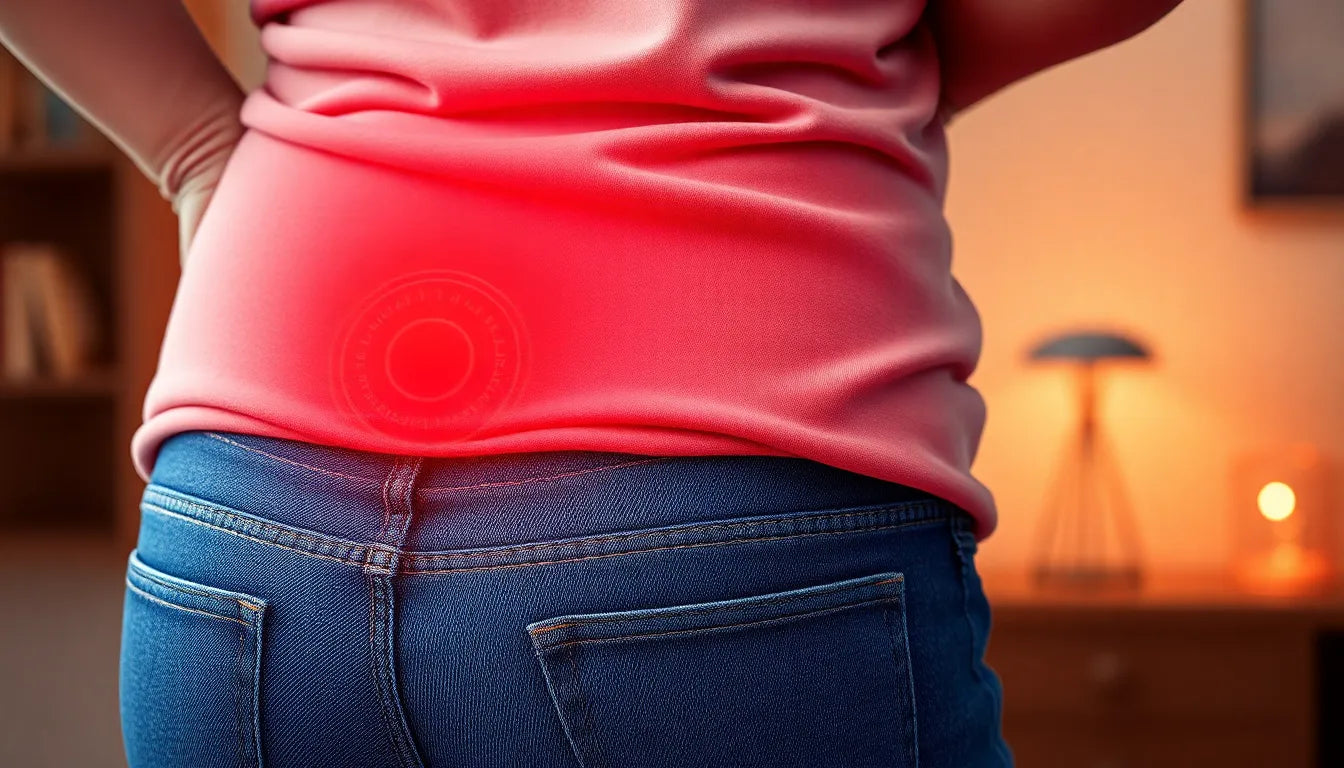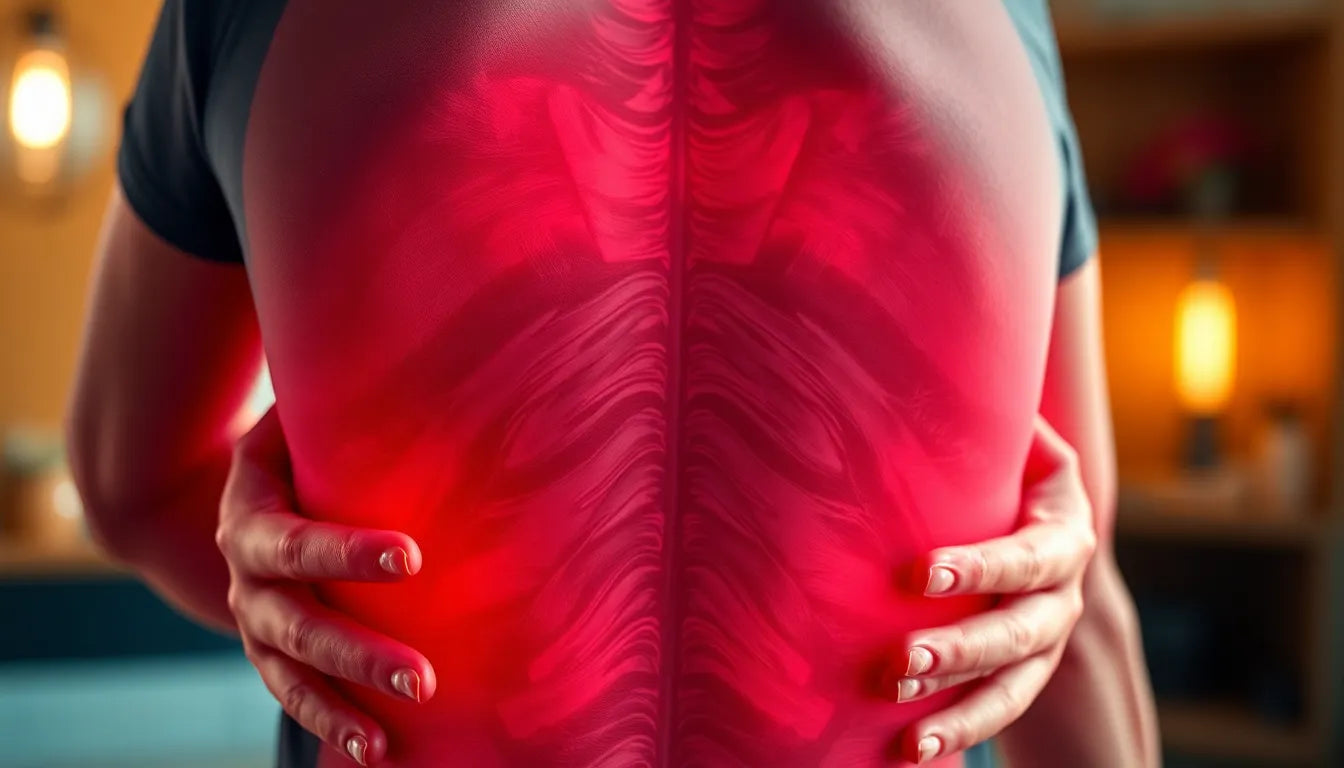Experiencing pain in one side of the lower back during pregnancy is a common issue that many expectant mothers face. This type of discomfort is frequently discussed on Danish health and pregnancy blogs, highlighting its prevalence and the need for effective solutions. As the body undergoes significant changes to accommodate a growing baby, it's not unusual for women to experience such localized pain, which can often be attributed to the physiological transformations happening within.
Understanding the physiological causes
During pregnancy, the body undergoes a series of hormonal and structural changes that can contribute to pain in one side of the lower back. One of the primary culprits is the hormone relaxin, which plays a crucial role in preparing the body for childbirth. Relaxin helps soften and loosen the ligaments and joints in the pelvis, making it more flexible for the birthing process. However, this increased flexibility can also lead to instability and discomfort, particularly in the sacroiliac joints, which are located in the lower back on either side of the spine.
The sacroiliac joints are a common source of pain during pregnancy because they bear the brunt of these hormonal changes and the additional weight of the growing baby. As these joints become more relaxed and less stable, it can lead to pain that is often experienced on one side of the lower back. This pain can range from a mild ache to sharp, stabbing sensations, and it may be exacerbated by certain movements or positions.
Moreover, the body's center of gravity shifts as the pregnancy progresses, which can cause additional strain on the lower back. The growing uterus can also put pressure on the surrounding muscles and nerves, contributing to discomfort in the lower back area. These physiological changes are normal and expected, but they can lead to significant discomfort for many women.
Understanding these underlying causes is the first step towards finding relief from one-sided lower back pain during pregnancy. By acknowledging the role of hormonal changes and structural adjustments, expectant mothers can better manage their symptoms and seek appropriate solutions to alleviate their discomfort.
Detailed causes and symptoms of one-sided lower back pain during pregnancy
As pregnancy progresses, a woman's body undergoes numerous changes, both hormonal and structural, that can lead to discomfort in the lower back, particularly on one side. The hormone relaxin, which facilitates the loosening of ligaments and joints in preparation for childbirth, plays a significant role in this process. While this hormonal shift is crucial for labor, it also makes the body more prone to strain and misalignment, especially in the lower back and pelvic regions.
Typical symptoms of this condition include a sudden onset of pain that can vary in intensity. Some women may experience a mild, persistent ache, while others might feel sharp, stabbing pains. This discomfort is often exacerbated by standing for prolonged periods or towards the end of the day when fatigue sets in. Additionally, many women report tenderness in the hips, radiating pain that mimics sciatica, morning stiffness, and difficulty finding comfortable sleeping positions.
Understanding pelvic girdle pain (PGP)
Pelvic girdle pain (PGP) is a specific condition that many pregnant women experience, often manifesting as pain on one side of the lower back. This condition arises due to changes in the elastic joints and supporting structures of the pelvis, influenced by the same hormonal shifts that prepare the body for childbirth. PGP can significantly affect mobility and quality of life, making it essential for expectant mothers to recognize and address this condition promptly.
Insights from leading experts and resources
Several reputable sources offer valuable insights and guidance on managing one-sided lower back pain during pregnancy. For instance, Babyinstituttet provides a physiological explanation of these pains, helping to normalize the experience for many women. Anodyne.dk offers an in-depth analysis of the causes and symptoms, along with week-specific guidance that emphasizes the importance of maintaining proper posture and using supportive equipment.
Min Osteopat highlights the importance of seeking professional help early, especially if the pain becomes severe or debilitating. Din Børnekiropraktor provides an overview of pain patterns and emphasizes the need for individualized planning to manage symptoms effectively. Meanwhile, Momkind focuses on PGP, explaining the variations in symptom intensity and location, which can help women identify and address their specific pain points.
Guidance for managing and relieving pain
For those experiencing one-sided lower back pain during pregnancy, there are several strategies to manage and alleviate discomfort. Maintaining good posture is crucial, as it helps distribute weight evenly and reduces strain on the lower back. Using ergonomic aids, such as support belts, can provide additional stability and comfort. Engaging in pregnancy-specific exercises, such as gentle stretching and strengthening routines, can also help alleviate pain by improving flexibility and muscle support.

Lumbar support belt
Supports and stabilizes the lower back, helps relieve pain and tension, adjustable for comfort.
Consulting healthcare professionals, such as physiotherapists or osteopaths, can provide personalized advice and interventions tailored to individual needs. Early intervention is key to preventing the pain from becoming more severe or chronic, and professional guidance can ensure that expectant mothers receive the most effective care.
How Anodyne can support expectant mothers
Anodyne is well-positioned to offer comprehensive support to pregnant women experiencing one-sided lower back pain. By providing in-depth articles on the causes, symptoms, and treatment options, Anodyne can empower women with the knowledge they need to manage their pain effectively. Additionally, offering ergonomic advice, including recommendations for support belts and sleeping products, can help alleviate discomfort and improve quality of life during pregnancy.
By incorporating expert insights from osteopaths and chiropractors, Anodyne can enhance its credibility and provide authoritative guidance. Furthermore, by highlighting when to seek medical attention and differentiating between common pregnancy-related discomforts and more serious conditions, Anodyne can help women make informed decisions about their health and well-being.
Effective strategies for managing pain
Experiencing pain in one side of the lower back during pregnancy is not only common but can also be managed with the right strategies. Maintaining proper posture is essential, as it helps in distributing the body's weight evenly, reducing undue pressure on the lower back. Ergonomic aids, such as specially designed support belts, can provide additional stability and comfort, helping to alleviate pain by supporting the pelvis and lower back.

Women's Posture Shirt™ - Black
Patented posture shirt activates muscles, may relieve pain/tension, improves postural awareness.
Engaging in pregnancy-specific exercises can also be highly beneficial. Gentle stretching and strengthening routines, ideally guided by a professional, can enhance flexibility and muscle support, reducing the likelihood of strain and misalignment. Activities such as prenatal yoga or aquatic exercises are excellent options, as they are low-impact and focus on strengthening the core and pelvic muscles.
It is also advisable to consult healthcare professionals, such as physiotherapists or osteopaths, who can offer personalized advice and interventions tailored to individual needs. Early intervention is crucial to prevent the pain from escalating and becoming a chronic issue. Professional guidance ensures that expectant mothers receive the most effective care, addressing both immediate discomfort and long-term well-being.
How Anodyne can assist expectant mothers
Anodyne offers a wealth of resources and support for pregnant women experiencing one-sided lower back pain. Through comprehensive articles that delve into the causes, symptoms, and various treatment options, Anodyne empowers women with the knowledge needed to effectively manage their pain. This information is crucial for making informed decisions about health and well-being during pregnancy.
Additionally, Anodyne provides ergonomic advice, recommending products such as support belts and sleeping aids that can alleviate discomfort and enhance quality of life. These products are designed to offer stability and comfort, helping to mitigate the strain on the lower back caused by the growing baby and hormonal changes.
By incorporating expert insights from osteopaths and chiropractors, Anodyne not only enhances its credibility but also provides authoritative guidance. This expert input is invaluable in helping women differentiate between normal pregnancy-related discomforts and more serious conditions that may require medical attention.
Frequently asked questions
What causes one-sided lower back pain during pregnancy?
One-sided lower back pain during pregnancy is primarily caused by hormonal changes, particularly the hormone relaxin, which loosens ligaments and joints. This, combined with structural shifts in the pelvis, can lead to instability and discomfort, especially in the sacroiliac joints.
How can I alleviate this pain?
To alleviate this pain, maintaining good posture is crucial. Using ergonomic aids like support belts, engaging in pregnancy-specific exercises, and consulting a healthcare provider for personalized advice are effective strategies.
When should I seek medical attention?
If you experience severe pain, numbness, or persistent sleep issues, it is important to seek medical attention. Early intervention can prevent complications and ensure appropriate care.
What is pelvic girdle pain, and how is it related?
Pelvic girdle pain is a condition where the pelvic joints become unstable, often causing pain on one side of the lower back. It is related to the same hormonal and structural changes that occur during pregnancy.
Are there specific exercises that can help?
Yes, there are specific exercises that can help, such as prenatal yoga and aquatic exercises. These focus on strengthening and stabilizing the pelvic area, improving flexibility and muscle support.
Kilder
- Babyinstituttet. "Ondt i lænden under graviditet."
- Min Osteopat. "Gravid og ondt i lænden."
- Faaborg Rygcenter. "Lændeproblemer for gravide."
- Din Børnekiropraktor. "Gravid: Ondt i lænden og ryggen."
- Smertefys. "Gravid med ondt i lænden: Få effektive tips til smerter i ryggen."
- Momkind. "Hvad er symptomerne på bækkenløsning?"


















